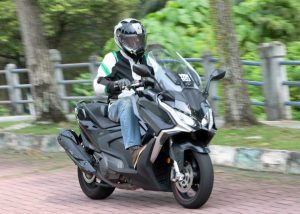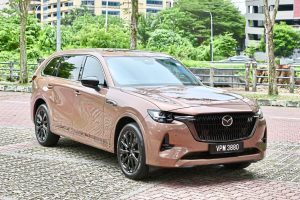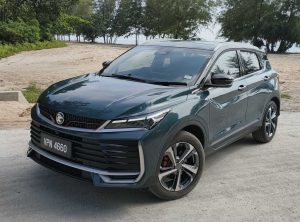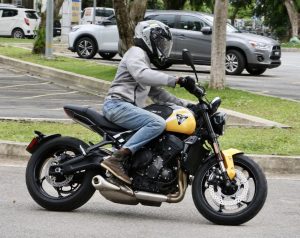MANILA: They vanished from Philippine roads in the thick of one of the world’s strictest pandemic lockdowns. Now, Manila’s colourful jeepneys may disappear for good as the government seeks to cut planet-warming emissions.
The South-East Asian nation is pursuing a plan to replace highly polluting jeepney models with modern minibuses that run on cleaner fuels or electricity. But the programme is facing pushback from drivers who need more financial support to make the shift, putting at risk the country’s goal of cutting greenhouse gas emissions by 75% by the end of the decade from 2020 levels.
Only 4% of the Philippines’ 158,000 jeepneys have been replaced with a more climate-friendly alternative since the government’s programme began in 2017, according to official data. President Ferdinand Marcos Jr, who took office in 2022, has given drivers until the end of the year to form or join cooperatives to help them fund the transition or risk losing their permits to operate.
The mandate is a major worry for drivers like Roger del Monte, who returned to Manila’s roads last year after the pandemic halted his main source of income for almost two years. Jeepney drivers like him typically earn about 650 pesos (RM53) a day, putting the cost of a modern jeepney - which can go for as much as 2.8 million pesos (RM228,000) - far out of reach.
"We won’t be able to shoulder the cost,” the 46-year-old said as he waited for passengers to board the rickety jeepney he’s driven for seven years so he could send his two children to school. "We’ll be deep in debt.”

Called the "king of the road” because of their bulky frames, flashy designs and notoriously aggressive drivers, jeepneys are the cheapest mode of transport for many of the Philippines’ 110 million people. The 20-seater vehicles, often decorated with graffiti-inspired spray paint, evolved from the army jeeps used during World War II and run on diesel, one of the dirtiest fuels available.
A study from De La Salle University in Manila said replacing old models in the capital may reduce carbon monoxide and dangerous particulate matter emissions by 90%.
The problem for the Marcos administration is finding the money to back up its green plans. State resources remain scarce as the economy recovers from a Covid-induced slowdown.
The government currently offers a subsidy of 160,000 pesos (RM13,000) per jeepney, and didn’t set aside funding specifically for the jeepney modernisation programme in this year’s budget.
Last year, it allocated 1.8 billion pesos for subsidies and social safety programmes for drivers - a fraction of the 64.2 billion pesos that the land transport agency estimates is needed to raise the subsidy per jeepney to 360,000 pesos (RM29,254).
"This is torture for drivers,” said Modesto Floranda, who heads Piston, one of the transport groups that organized a strike against the jeepney modernisation policy this month.
Some 900,000 drivers may lose their jobs if the government removes old jeepneys from roads, he warned.
"The government left us on our own to carry out this programme.”
The government’s end goal is to transition drivers to zero-emission electric vehicles, but the Philippines still lacks sufficient charging infrastructure. It’s more common right now for those able to make the shift to buy minibuses with "Euro-4 compliant” diesel engines, which have catalytic converters that are more efficient at filtering out pollutants such as sulfur and carbon monoxide.
Those who have taken the plunge tout the benefits to their health and income.
Elisio Estoque, who plies a regular route between the capital and nearby Rizal province, said he earns more after switching to a white Euro 4-compliant minibus due to its bigger capacity. The vehicle belongs to a cooperative, which pays Estoque a fixed 750-peso daily wage and takes the rest of his earnings.
"I get to ride an air-conditioned vehicle in this heat,” said 44-year-old Estoque, "and I am not exposed to smoke outside.”
Helen Viloria, who manages a cooperative in the capital, said her group had to take out loans from a state bank to fund its fleet of 52 jeepneys.

The government should give them more subsidies as well, she said.
"Drivers will not be able to do this alone.”The Marcos administration should also consider pilot-testing the programme with local governments that are more prepared, said Reycel Hyacenth Bendaña from Move As One Coalition, a civil society group pushing for safer transport.
Marcos has said his government will review the programme until December, and make sure that transport workers won’t carry additional burden.
"We have to make sure that no one loses livelihood because he or she can’t afford a vehicle,” he said.
While the government has good intentions, putting the cost on drivers and operators from the poor and lower-middle classes is "not acceptable,” said Antonio La Viña, associate director for climate policy at research group Manila Observatory.
He suggested that officials try to get financing from developed countries to advance the programme.
"We can’t transition well to a green economy if we don’t do it in a just manner.”












